
Truth in the Image: Greig Fraser, ASC, ACS
The award-winning Dune cinematographer discusses his history, career and philosophies — and shooting The Batman.
At this year’s Academy Awards ceremony, Greig Fraser, ASC, ACS took home the Oscar for best cinematography for Dune: Part One (AC Dec. ’21), and joined the small, elite group of cinematographers to be awarded the “trifecta” of an Oscar, BAFTA and ASC Award for the same work in the same year. He was also nominated for each of the three awards for Lion — for which he won the ASC Award — and earned an additional ASC nomination for his work on the television series The Mandalorian (AC Feb. ’20).
Fraser was born in Melbourne, Australia, and developed an early interest in photography. “I studied photography and media in high school, and I guess I was okay at both of them,” he recalls. “I didn’t really know anything about the film business or the people who worked in it. I thought that I wanted to work as a still photographer, and I started working at a photography/film studio as a cleaner during my second year in university.
He adds that this was after his first year at the Royal Melbourne Institute of Technology (RMIT), which was a bit of a false start. “I failed the first year,” he says. “I went to university straight out of high school, and never took it seriously. I missed too many classes, failed, and took a year off.”
“The cinematographer is responsible for helping the audience feel and experience the story.”
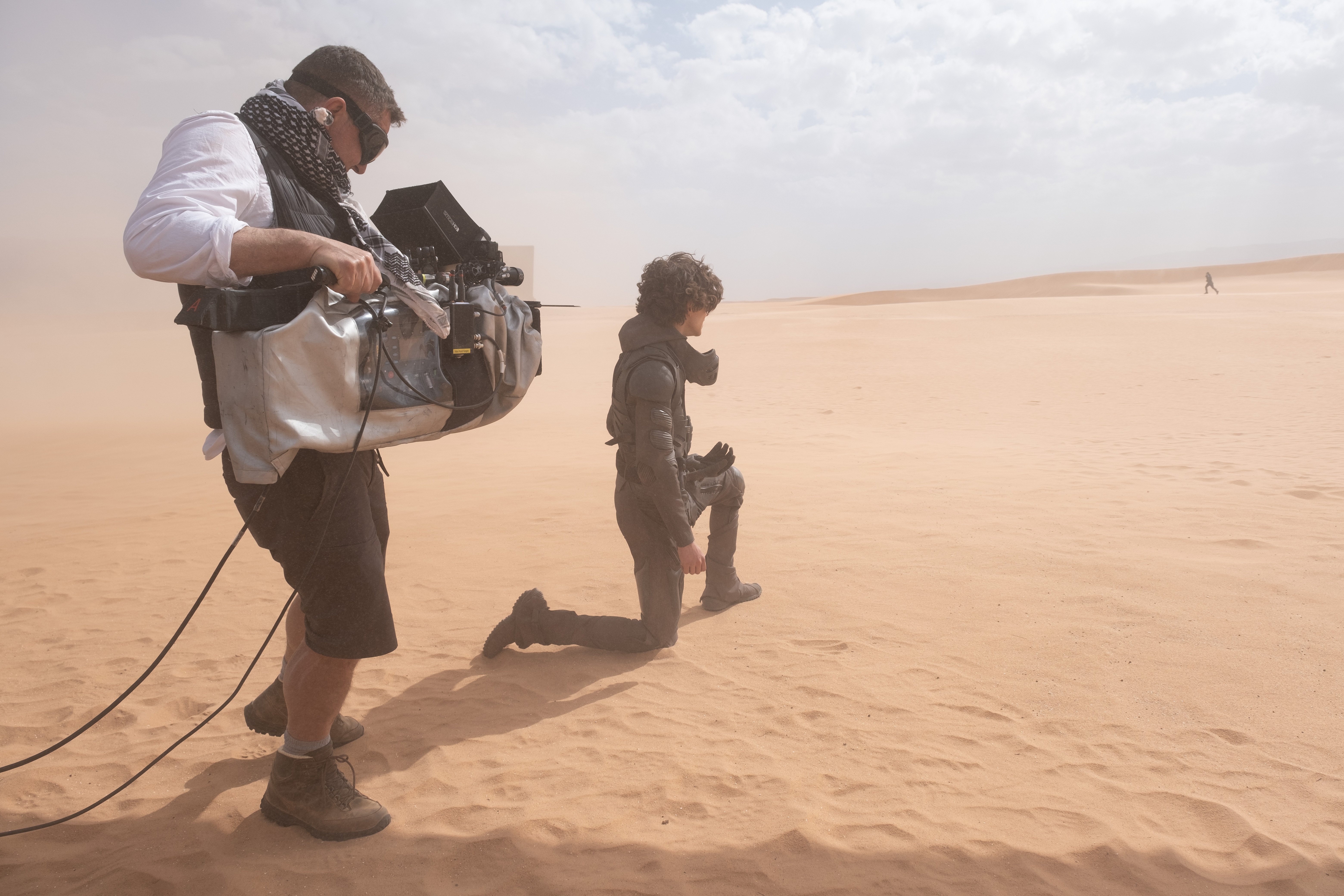
As he began this work at the studio, once he’d resumed his studies, Fraser “met a lot of photographers, but I also met filmmakers and that was fascinating,” he recalls. “Photography is a very solo profession. While you might occasionally have an assistant or a subject you’re shooting, it’s mostly the photographer out on assignment alone. Filmmaking was very much a team effort, and I liked that. I started borrowing equipment to shoot 16mm and 35mm stuff on my own, and offered my services to young directors to shoot their work. I started spending as much time with the filmmakers as I could — and I met [director] Garth Davis, whom I became good friends with.”
This relationship with Davis led Fraser to photograph one of his first documentary films, P.I.N.S., about three Melbourne parking inspectors. Meanwhile, Fraser was also keeping a keen eye on young directors, and sent a letter to Nash Edgerton, admiring his work in music videos. “He had done this Eskimo Joe video, ‘Liar,’ which was one of the finest uses of a limited-budget, single-shot video I’ve ever seen,” Fraser says. “It was really beautiful in how the story unfolds. I wrote to him to offer my admiration. On my next trip to Sydney, we met and began working together.”
In the narrative realm, that work with Edgerton resulted in Fraser shooting the shorts Fuel, Lucky and Spider — released in 2003, ’05 and ’07, respectively — along with two Bob Dylan music videos, “Must Be Santa” and “Beyond Here Lies Nothin’.
“I remember being challenged by everything I was doing during those early days,” Fraser notes. “I’d work my ass off so that I didn’t look like an idiot when we were shooting. I’d study 100 films in prep. I’d go to the tech scout, and then I’d sneak back to the location the next day to do my light study and make my plans. ‘What happens if clouds suddenly roll in?’ You play the chess game in your mind over and over, and know all your moves. I remember it being quite intense and fun. I was also self-teaching, just constantly learning.”
Fraser had the opportunity to connect with Academy Award-nominated director Jane Campion on the 2006 short film The Water Diary, which was later compiled into the feature anthology 8. Campion then turned to Fraser to shoot Bright Star (AC Oct. ’09), which would be his fourth narrative feature.
The next year, Fraser collaborated with director Matt Reeves to shoot the vampire film Let Me In (the U.S. adaptation of the book Let the Right One In). He followed this with Andrew Dominik’s Killing Them Softly (AC Oct. ’12), and then his first big-budget film — the action fantasy Snow White and the Huntsman (AC June ’12), directed by Rupert Sanders — which started him on a string of weightier fare with Zero Dark Thirty (AC Feb. ’13) alongside director Kathryn Bigelow, followed by Bennett Miller’s Foxcatcher (AC Dec. ’14) and Rupert Wyatt’s The Gambler. He earned his first Academy Award nomination for Davis’ Lion, then stepped into the Star Wars universe with the first spinoff title of the franchise, Rogue One: A Star Wars Story (AC Feb. ’17), directed by Gareth Edwards. From there, he returned to smaller independent work with Davis’ Mary Magdalene, and then launched into the Dick Cheney biopic Vice (AC Jan. ’19) with director Adam McKay.
“I’m a firm believer in the fact that we, as humans, have evolved to understand light.”
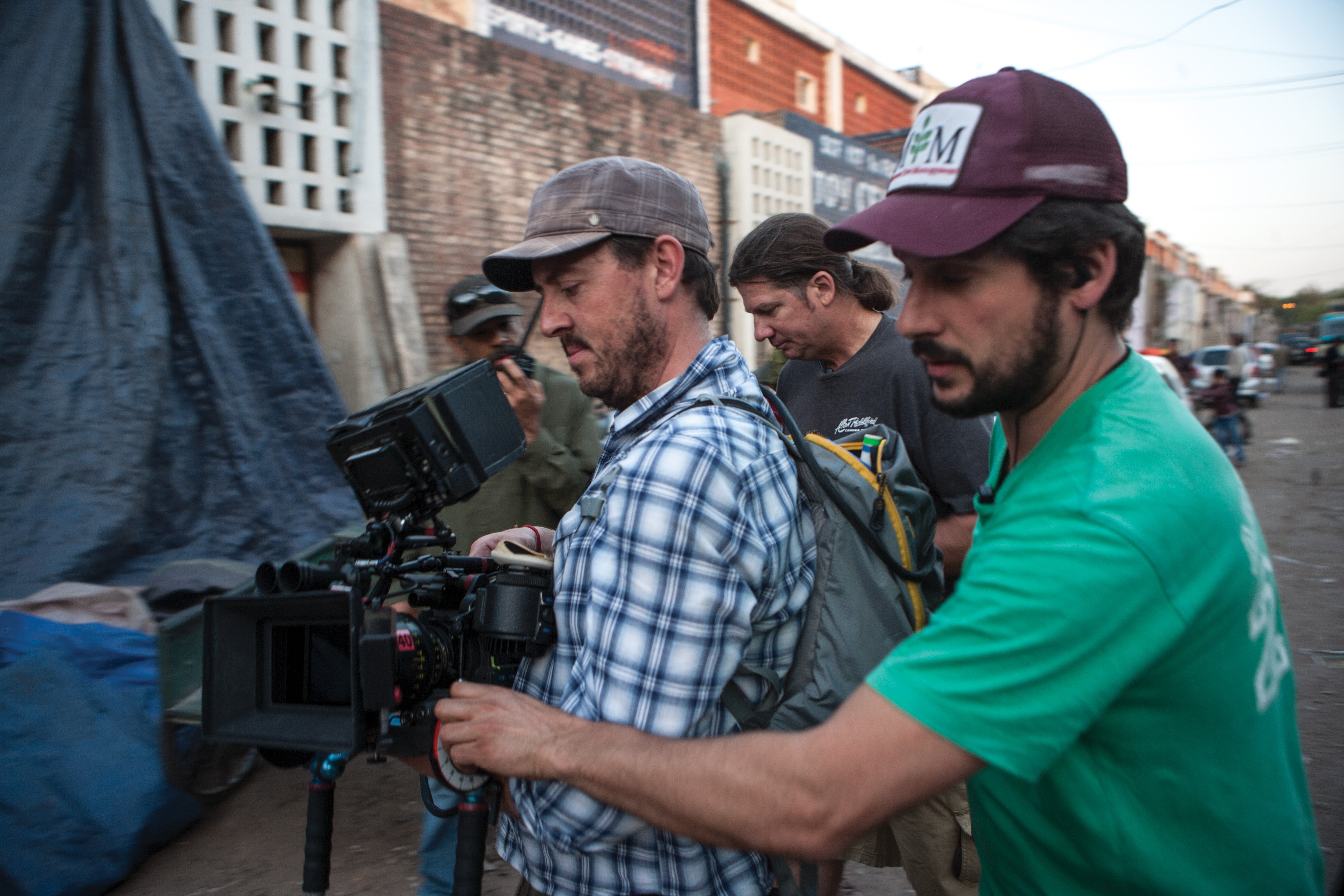
Fraser returned to the Star Wars universe for the Disney Plus series The Mandalorian — the first major release to incorporate LED-wall virtual-production techniques — where he proceeded to break technological barriers “by leading the revolution,” he says, via his collaboration with Lucasfilm, ILM and Epic Games.
He left the show in the skilled hands of Barry “Baz” Idoine, ASC, and headed to Hungary to shoot Denis Villeneuve’s epic Dune.
Fraser was invited into Society membership in 2013, with recommendations from ASC members Roger Deakins, Rodney Taylor, Mandy Walker and Steven Fierberg.
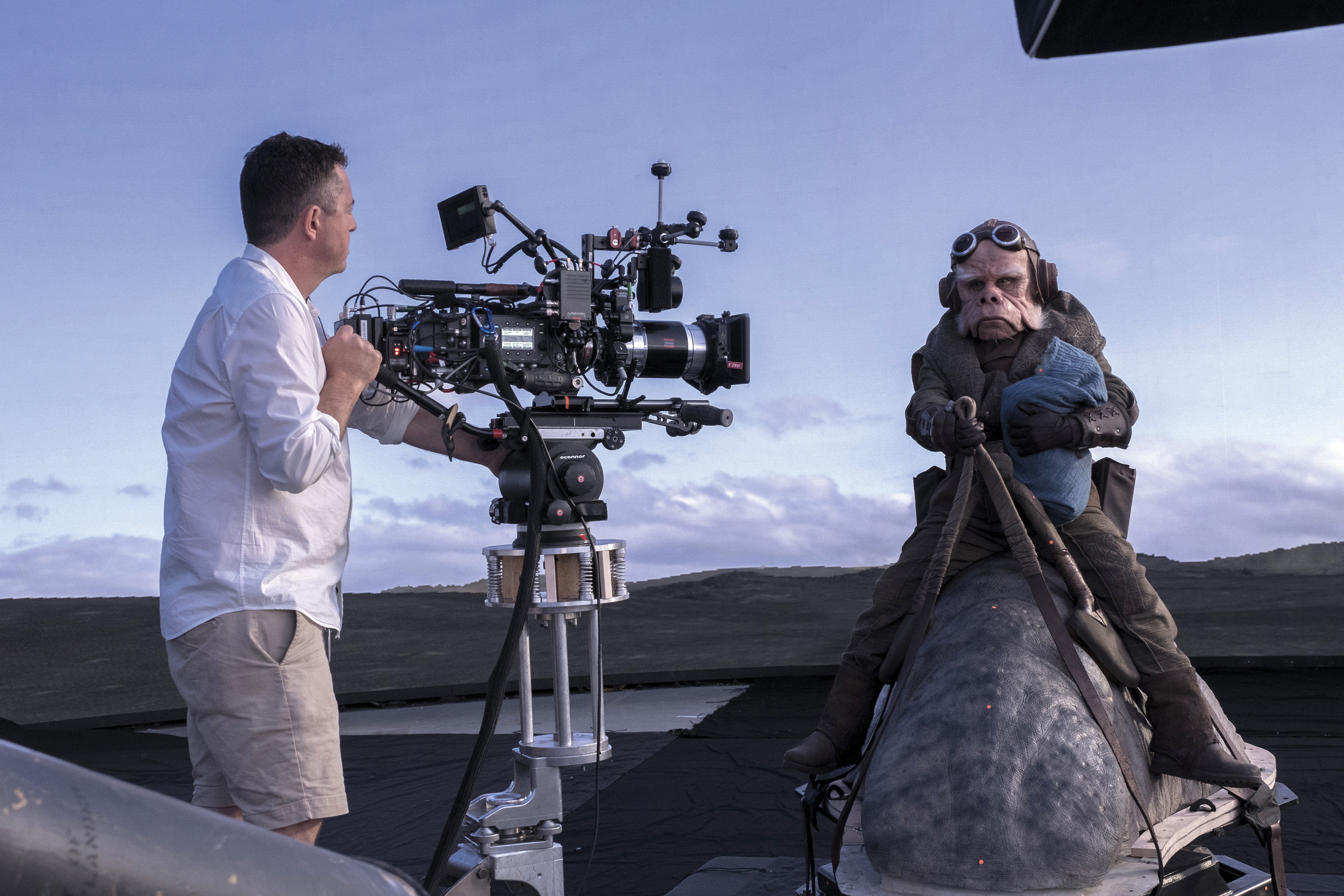
The cinematographer notes that the heart of his photography is rooted in truth — an integrity and honesty of the image, no matter how fantastical the story might be. “I’m a firm believer in the fact that we, as humans, have evolved to understand light,” he says. “We may not all be able to verbalize it — like my mom might not be able to tell me why an image doesn’t feel right, but she knows, intuitively, if it isn’t right. For me, it’s about honesty with my lighting choices, with my lenses, with the compositions and movement of the camera — it all has to be grounded in a truth. The cinematographer bears responsibility for the audience’s subconscious reaction to the imagery. We’re responsible for helping them feel and experience the story, and I feel it’s a critical part of the job to be as honest in that as possible.
“At the same time, almost everything in the filmmaking process is ‘false,’” Fraser continues. “A man in a Batsuit is false and a Jedi wielding a lightsaber is false, but you’ve got to find every element of truth in the scenes — just like the director does. It matters that the audience believes that this film could be a reality. Lighting is a huge part of that. If you come out of a movie not believing the light, then it’s doing a disservice to the story.
“In a recent talk I did at Camerimage, a student asked me, ‘How would you define your style?’ And I struggled with that, because I don’t think I have one. So, I asked the student, ‘Do I have a style?’ They said ‘Well, everything you do feels authentic.’ And I said, ‘I’ll take that! I’ll own that. I don’t mind that being the definition of my style, at all.’ It is, truly, what I strive for. I don’t want to be locked into any particular look or photographic style. I want to find the truth in the story and do my best to represent that — whatever form that takes.”
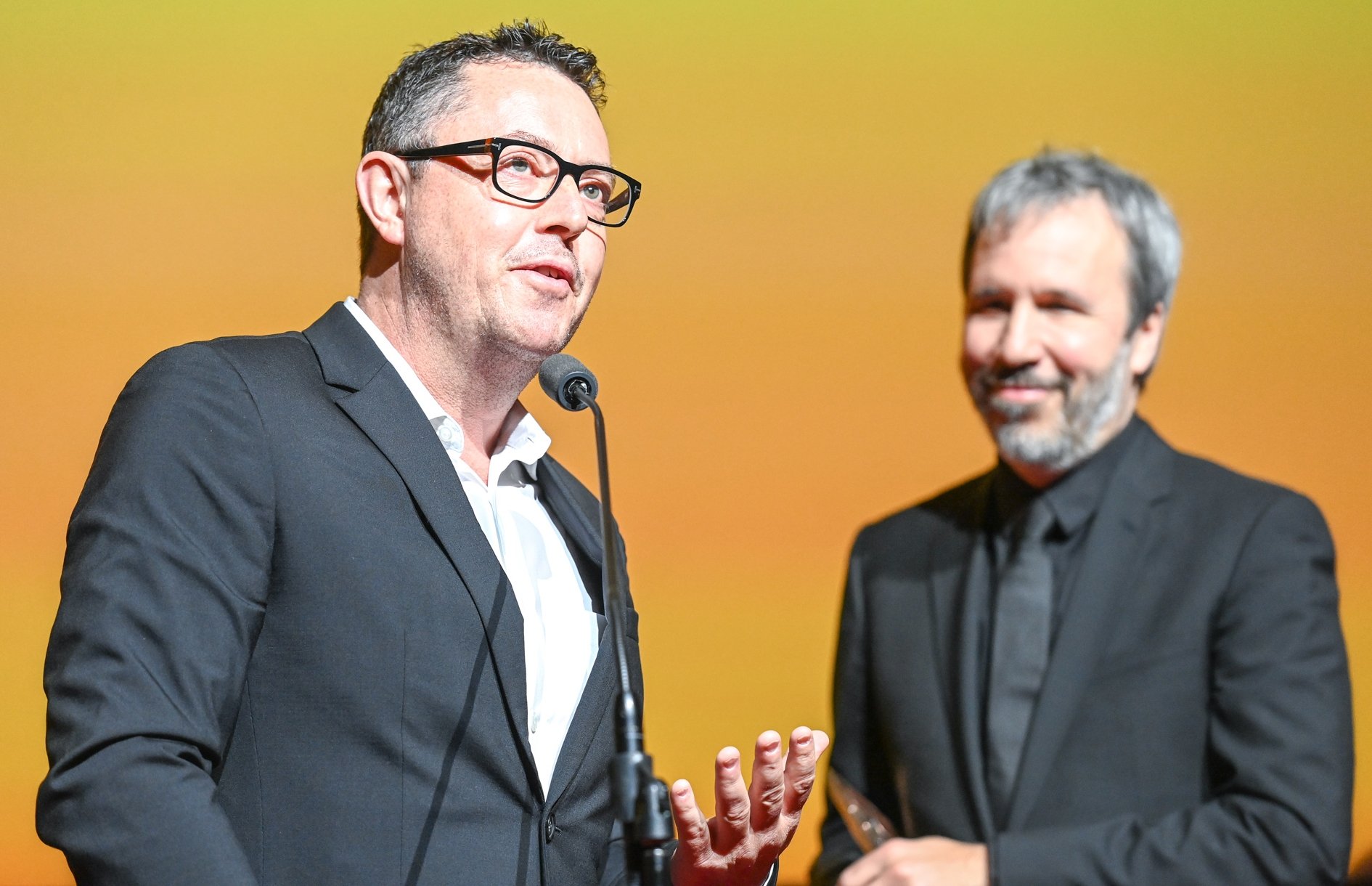
Shooting The Batman
Fraser’s latest grand-scale feature, The Batman, is a dynamic visual feast of a superhero adventure — the darkest, most noir-like adaptation of the Caped Crusader yet. He and director Matt Reeves envisioned capturing the true darkness of the masked-vigilante persona of Bruce Wayne (Robert Pattinson) within a gritty detective story.
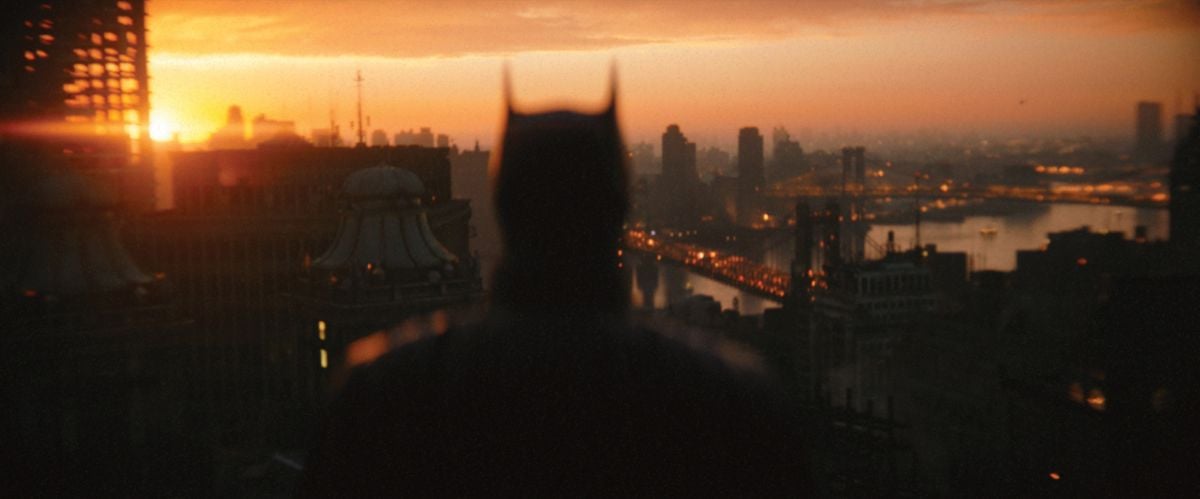
Fraser and Reeves set out to create a film that was nearly always dark. One resulting challenge for the cinematographer was lighting the black Batsuit in these very low-light environments. “From an exposure standpoint, everything borders on the edge,” Fraser says. “You can’t see too much of this guy — he loses his frightening appeal if he’s too exposed. It’s a massive responsibility to expose him enough that we see the character underneath, but not so much that it feels false or cartoonish. You must see the actor in the suit, otherwise the character doesn’t have heart and soul. The approach is that you’ve got to see into his eyes. When Rob is wearing the Batsuit, I worked to make sure that I pushed light into his eyes, while keeping it mostly off the cowl. There was a perfect sweet spot for the key light that would reflect off the eyes, but not hit the cowl or jaw too much. To hit that, I often had to ask Rob to be his own stand-in, because the lighting had to be that precise. I could get 80 percent of the way there with a stand-in, but then it had to be him and his face to really dial it in.”
The scale of the lighting only grew from there. For a climactic nighttime sequence that takes place outside of Gotham Square Garden Arena as residents rush for shelter following a city-wide flood — caused by the supervillain Riddler (Paul Dano) — Fraser and gaffer Jamie Mills were tasked with creating a massive soft box over the outside of the arena. The rigging comprised 687 single Digital Sputnik cubes (mostly from DS6 lamps broken down into individual modules), which were spaced into a 200'x170' box. The rig featured Magic Cloth on the box and 251 Quarter White diffusion on the lamps, and took crews seven weeks to construct.
A Daylight Moment
One of the very few exceptions to the film’s dark motif was the daytime memorial for Gotham’s Mayor Mitchell (Rupert Penry-Jones), set in City Hall, which presented a sizable lighting challenge for Fraser.
The set was constructed at the massive 158' x 617' stage at Cardington Studios, located north of London, and featured floor-to-ceiling cathedral-style windows at either end of a gothic-style hall. But the windows were not part of the physical set; they would be added in postproduction. To create light from the two nonexistent walls of windows, Fraser, gaffer Mills and the construction department crafted two enormous soft bounces at either end of the set, each of which passed through one of two equally huge fabric gobos, which shaped the light of the set’s would-be windows. The gobos’ fabric on the camera side — the “interior” — was the color of the set’s walls, and large sections were cut out in the shape of cathedral windows.
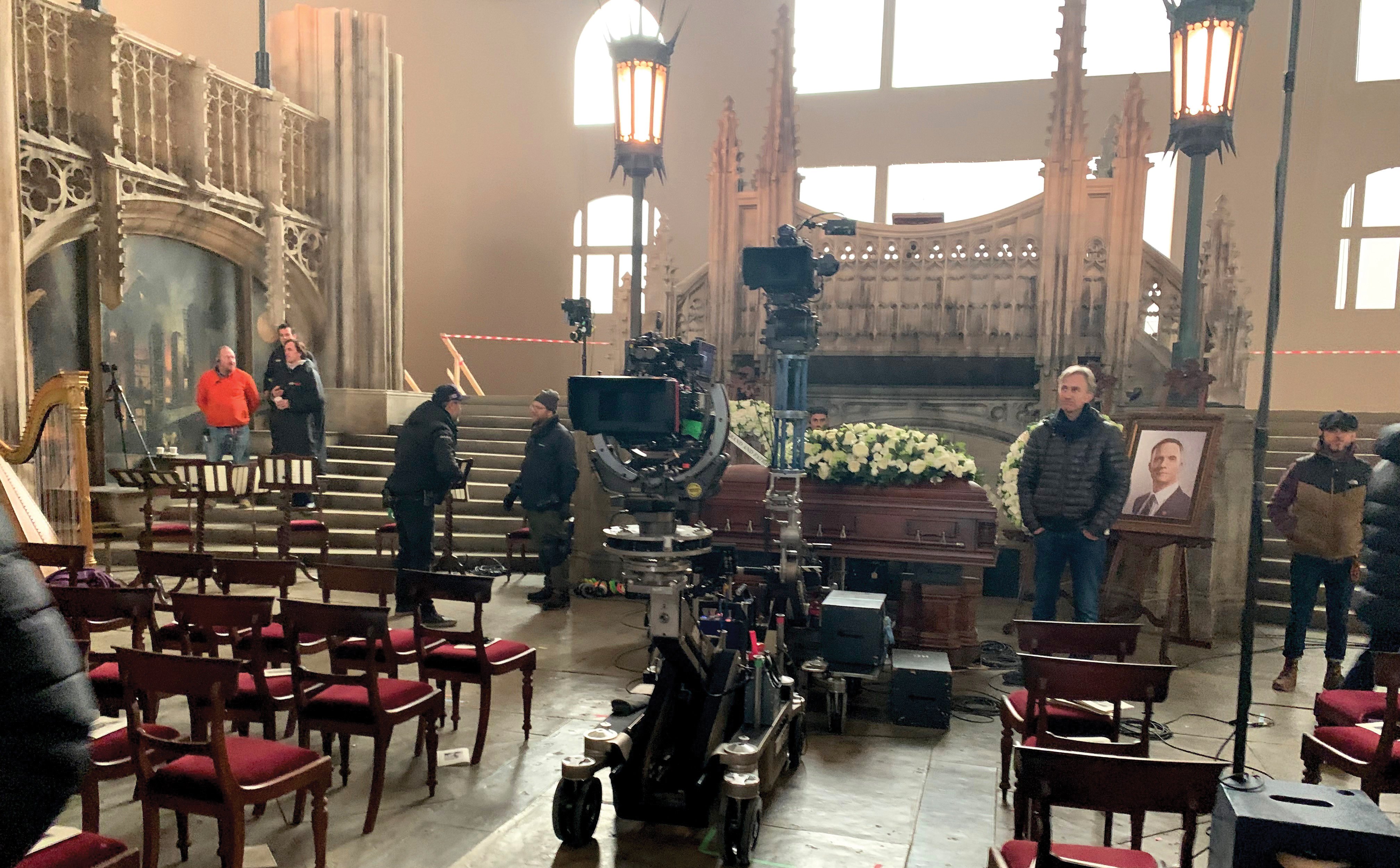
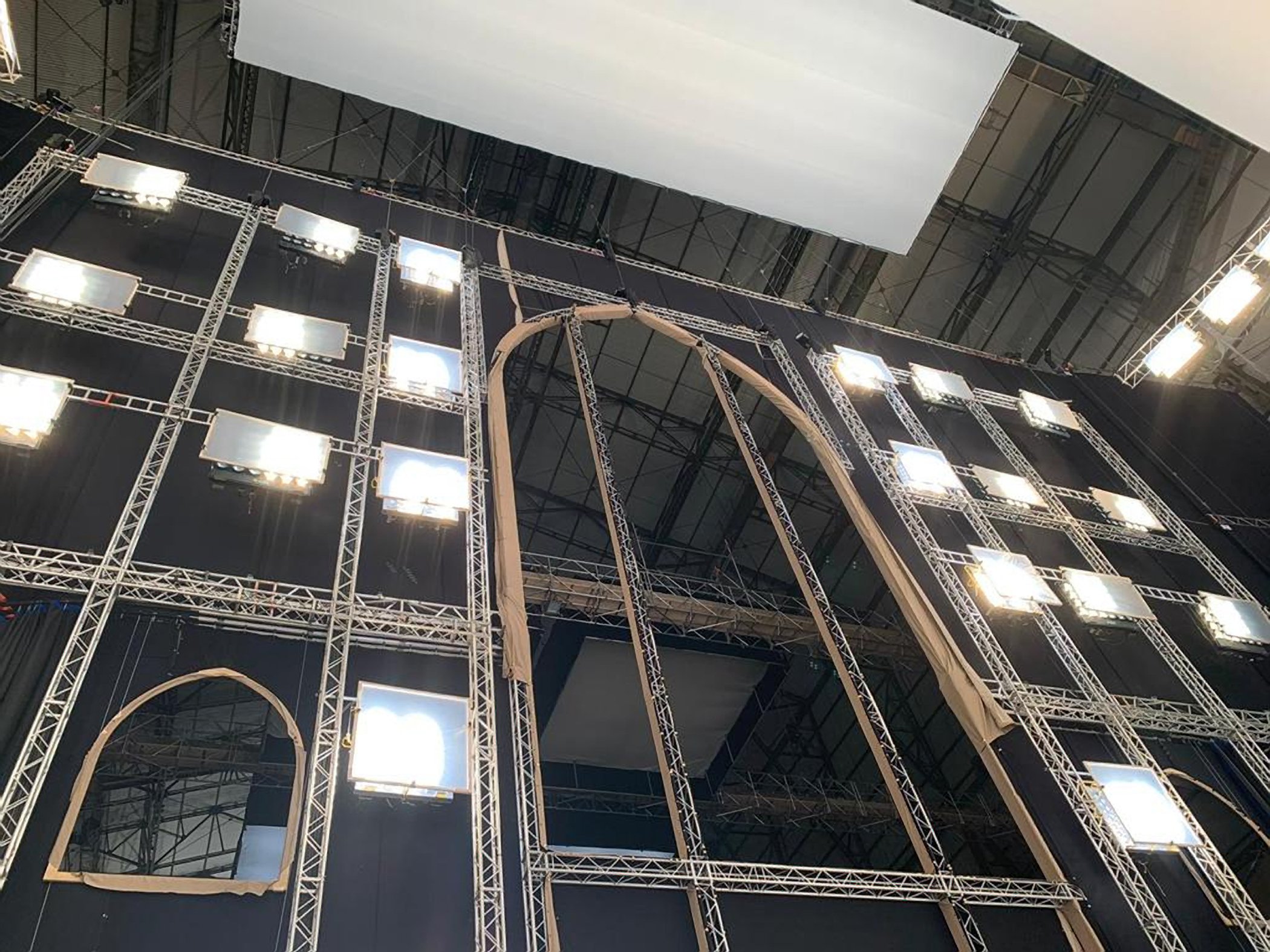
“Something we learned on Dune was to create fabric set extensions — as opposed to greenscreen, or [a screen that was] black or white — and bounce-material that was colored the same as the set,” Fraser says. “That way, the light reflecting off of it would have the right color for the environment.”
“You’ve got to see into his eyes.”
The gobos were crafted from “a stone-colored fabric, with a solid black backing to stop light from penetrating it from behind,” Mills says.
For light that would shine from the “exterior” through each gobo, the cinematographer brought in two extensive rigs — each comprising 30 24K Dino lights and 15 Quarter Wendy lights (16 1K PAR bulbs each) that were mounted onto the scaffolding supporting the gobo, and were bounced toward the backside of the fabric. Six 20Ks were also brought in, which were directly aimed at the backside of the gobo.
These fixtures, which were colored with Quarter CTB — in addition to “251 [Quarter White] diffusion on all the Dinos, to add to the overall softness,” Mills says — were bounced into a 120'x130' white molten cloth. They employed another six 20K Fresnels (also colored with Quarter CTB) for direct hard light passing through the gobo cutouts. A huge amount of power — 3,600 kilowatts, in this case — is an anomaly for Fraser, who generally strives to be as economical and environmentally friendly as possible with his lighting.
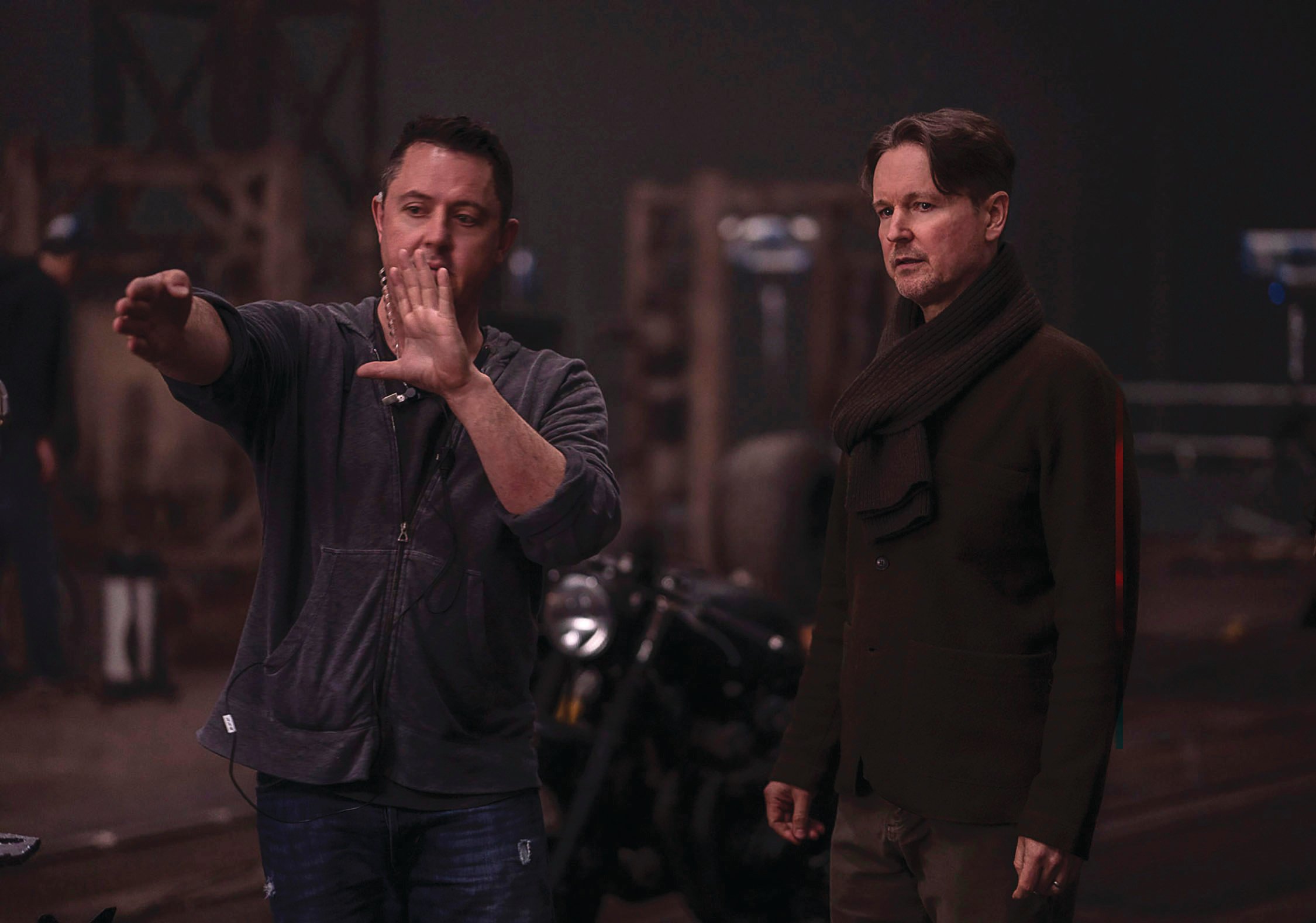
“I’m an LED guy,” the cinematographer says. “But in this case, there was nothing available to us that would have enough punch to get the look we were going for. I don’t find it ego-worthy to boast about how many watts of electricity we used — in fact, it’s quite embarrassing for me. I’d much rather talk about how much electricity we saved by using LEDs, and hopefully the hundreds of thousands of kilowatts I’ve saved in the past six years of my career helps balance out this one setup where we used more substantial power. It was also a rather complicated setup. We were lucky to have the incredible support and partnership of producer Simon Emanuel to achieve this set piece, but at the same time, I’m a frugal cinematographer. I’m very aware that I have to be careful where money is spent. So, therefore, Simon knows that when I do ask for something larger, it’s because it’s absolutely necessary. We’ve built up that trust.”
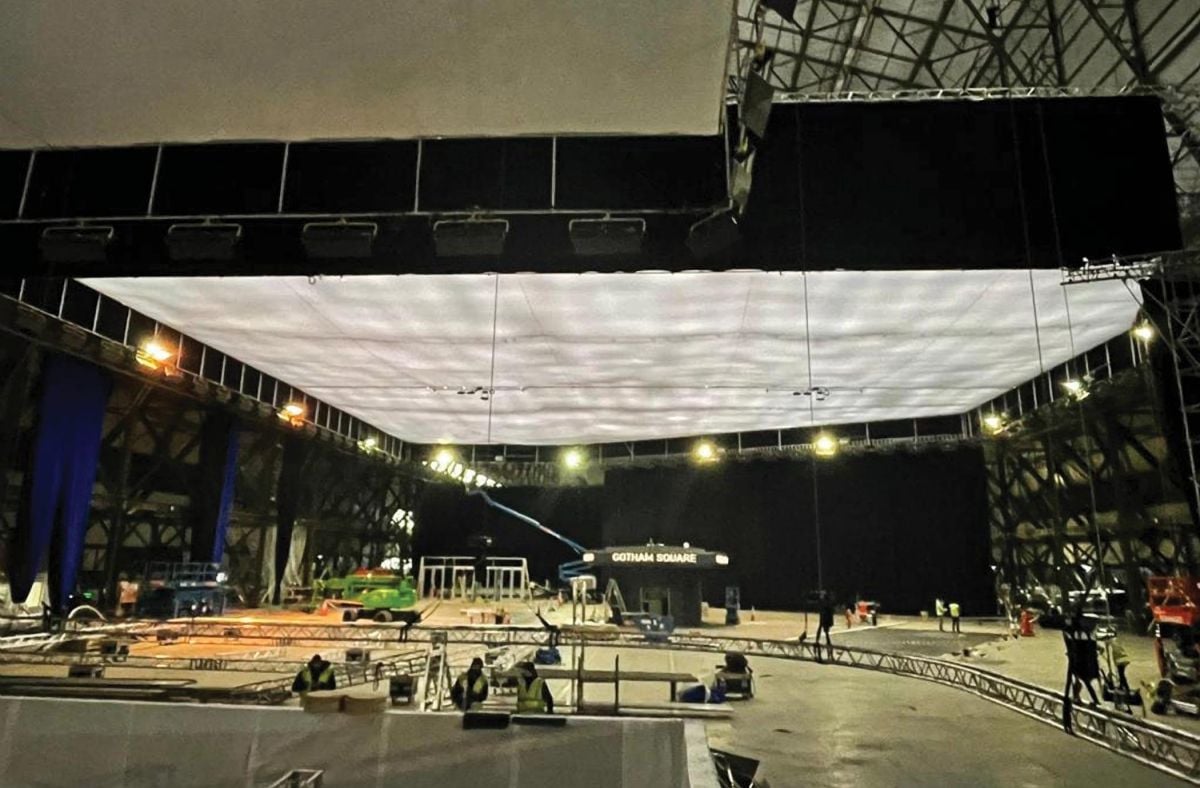
Dynamic Glass
Fraser is well known for his eclectic taste in lenses, particularly glass that has more character to it. In this case, before production started, Arri Rental contacted him about a new series of lenses they were working on for the Alexa LF format, and Fraser visited the facility to share his thoughts. While the Arri/Zeiss Master Anamorphics are some of the more intricately designed anamorphics on the market, they are often noted for being extremely clean, without the typical character that is associated with anamorphic lenses. Arri Rental was looking to tune the Master Anamorphics to cater to filmmakers like Fraser, who prefer a more aberrant image.
“They showed me the Series 1 of these new lenses, [but] they were too close to the Master Anamorphics in their look,” Fraser recalls. “I offered my thoughts, and they came back to me with Series 2, but they were very hesitant to show me, [since they were not yet ready for production]. But I looked at them and loved what I saw. Technically, they fell off very softly at the edges, but they were really quite beautiful and exactly what Matt and I had been talking about. I said, ‘These are perfect!’ and they’re what we shot with — the Series 2 of the Arri [Rental] Alfa lenses. Series 3 is now their production line, and they’re also extremely beautiful, but not as bold as the Series 2.”
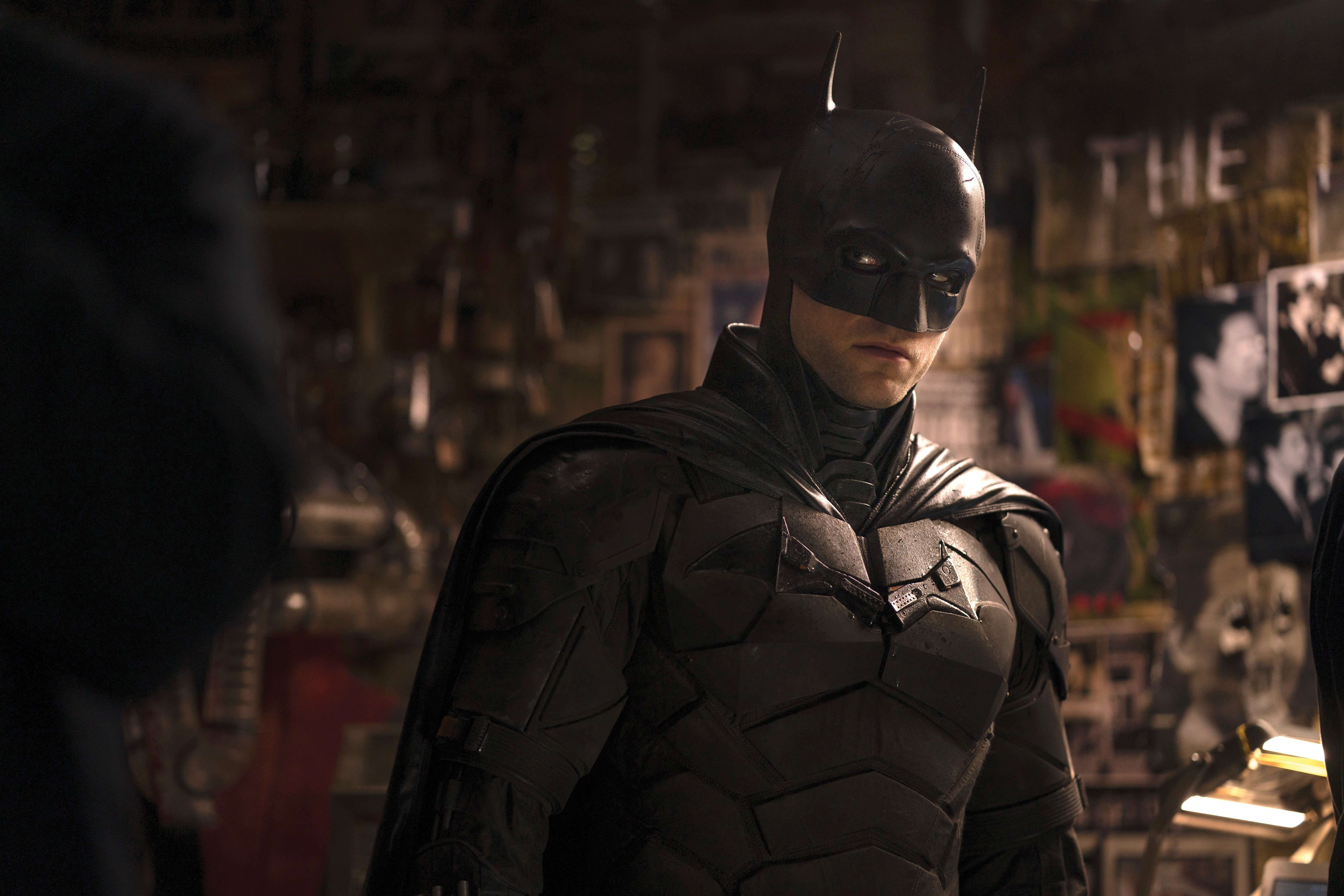
The significantly tuned Series 2 Arri Alfa anamorphic lenses exhibit a great deal of astigmatism, uneven field of focus, and some coma at the sides of the image, “but the center was great and sharp,” Fraser says. “That was great for us. Although we were shooting 2.39, we weren’t planning on framing this like a Sergio Leone Western with characters at the extreme edges of the frame; we were planning on being a lot more controlled and framing mostly in the center or just off-center. For an action film, this really helps keep the audience’s eye on the story so they won’t get lost as quick action happens throughout the scenes. As a cinematographer, it’s my job to help direct the audience’s eye to the most important part of the frame. We decided, especially for sequences with fast editing, that we wanted to keep the action central, and having these lenses that fell apart at the edges really forced us to follow those early framing decisions. Matt and I committed to the fact that we had a defined area in the middle of the frame to compose everyone, and the rest would fall off.
“The [Series 2] Alfas also have beautiful adjustable contrast. This is something that happens with highly aberrant lenses, especially those prone to more veiling flare. Wide open at T2.2, they flare a lot and have very low contrast, but stopping down half a stop to a stop could clean it up and give me an entirely different look. This is something that I look for in lenses, to give me a lot more control over the contrast on a shot-by-shot basis by simply adjusting the aperture a little bit. A T stop can be as much about contrast as it is about depth of field.”
Water Filters
Like much of the movie, a pivotal car chase scene takes place in torrential rain. The production knew it would be expensive — and wasteful — to line a mile of runway with rain towers, so they decided to wet down the road and cars, and add the falling rain as a CG element in post.
“Even though it wasn’t actually raining, there was still a lot of water flying around because the road and cars were wet,” Fraser recalls. “That got a lot of water on the lens, but it was uncontrolled and at times would just obliterate the image. So we had to bring in the new Bright Tangerine Prodigy rain deflector, but then the lens was too clean, so I turned to filters. I took a whole heap of optical flats and had globules of clear silicon dropped on them to act as raindrops, but [they were] controlled and consistent raindrops that refracted and reflected the light beautifully. I had several variations in how many and how large the globules were. If the headlights were straight into the camera, we’d use a less powerful one, but if there was no direct light, then we’d use one with more silicone. Even though the sequence feels very out of control, visually, it was very much controlled.
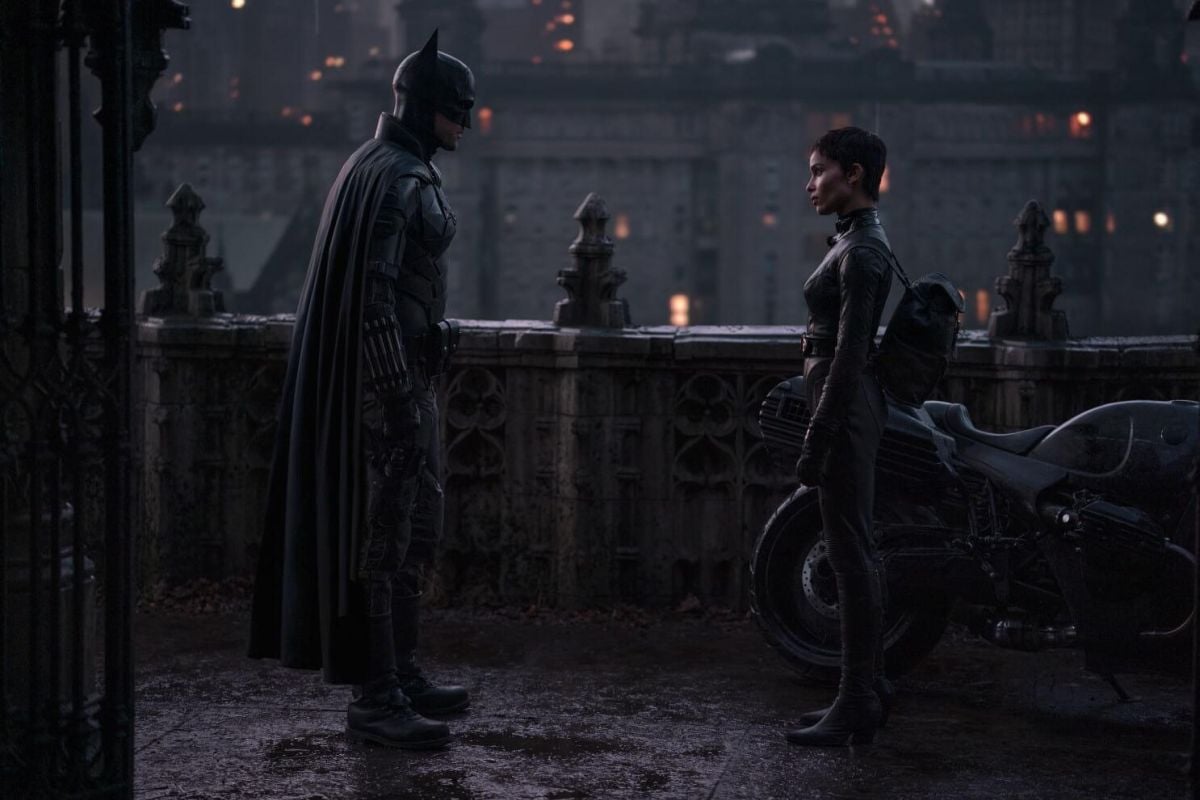
Film-Out
As he had done on Dune, Fraser incorporated a film intermediate on The Batman. “On Dune, we exported the colored digital master to film negative and then scanned that back to digital. On this film, we went out to negative, then printed a positive and separately scanned both the negative and positive back to digital. By adding the extra layer of process, we added another layer of control over the image and the amount of ‘film effect’ we wanted for each moment. When you’re shooting on film and printing on film, you start with negative, go to interpositive, then internegative, and then final release print. Each step loses some sharpness and overall resolution, and you don’t have a choice. When we’re shooting digital and going out to film and then back to digital, we’re building in some of that degradation of the image, but we have control and choice.”
Working with colorist and ASC associate Dave Cole at FotoKem, the film was recorded out to Kodak Vision3 2254 1 ASA intermediate stock as a negative, which was processed with a bleach-bypass technique and then contact-printed as an interpositive to the same 2254 stock.
Says Cole, “We utilized the skip-bleach process for the halation that it gave us around highlights, rather than for what you typically would use skip-bleach for: increasing contrast and desaturating the image. In fact, when we scanned the interpos back, we then reduced the contrast and added back color as Greig wanted. In a film as dark as this, if we increased contrast, we would lose so much detail. For example, if the highlights get higher and the iris of the eye stops down, you lose even more detail. We elected to keep the blacks open and ‘dirtier’ to better reflect the dirty and grungy nature of Gotham City.”
“We picked the scan from the [interpositive] as our main ‘hero’ image,” Fraser says. “For close-up shots, we’d often use the [interpositive] scan, but when we had wide shots, the [interpositive] would often lose too much resolution, so we used the scan from the negative instead. We picked the best look on a shot-by-shot basis. The film scanning adds the most beautiful texture into the film, especially from the positive.
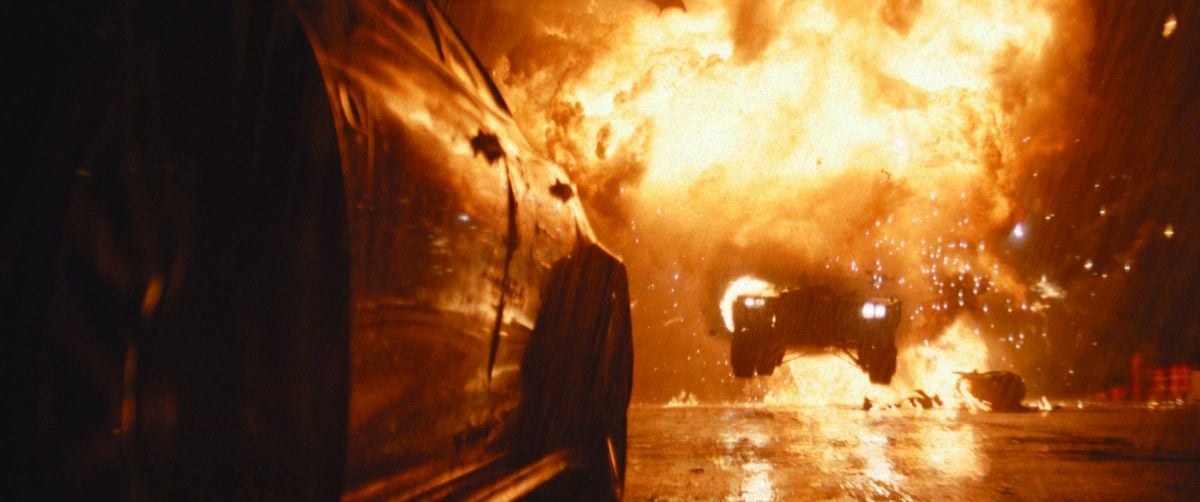
Optics Spotlight | Rehoused Ukrainian Lenses
While the majority of The Batman was shot with Arri’s Alfa anamorphic lenses, cinematographer Greig Fraser, ASC, ACS went with a more atypical choice for the climactic car-chase sequence between Batman and the Penguin (Colin Farrell). “A car chase is critical to any Batman movie, and [director] Matt [Reeves] loves car chases,” Fraser says. “We wanted a very dynamic chase, and knew we wanted to mount cameras onto cars and really lock in the image with the characters. This required smaller, lighter-weight rigs — and also cameras that could be destroyed if we became a little too brave with our stunts. This led to production purchasing some older Arri Alexa Classic cameras, which essentially became our crash cameras. [With this equipment] we could frame the characters more extremely, [as] the Arri Alfas wouldn’t work due to their edge deficiency, size and weight. I had decided early on that we would change up the look a bit for this sequence. I was looking for lenses that would still have character — that would maintain a continuity of look — but be smaller, lighter and less expensive if they got damaged in a stunt.”
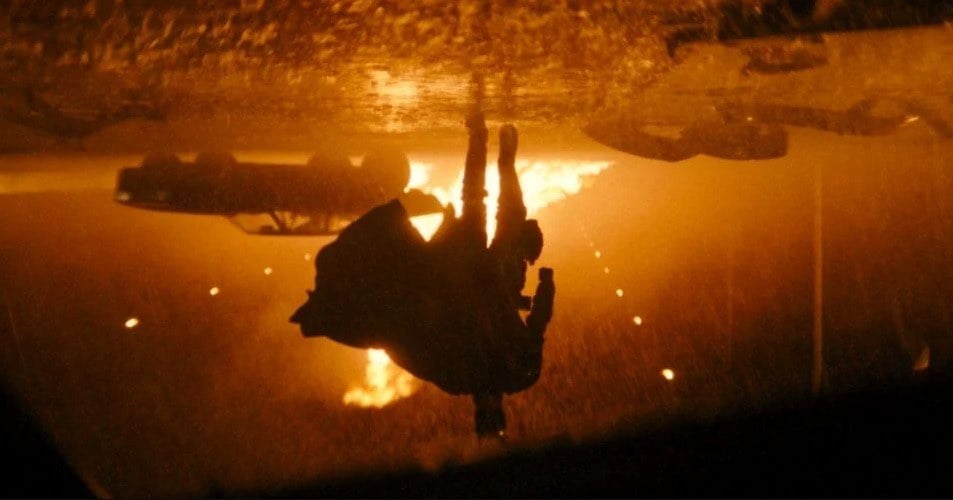
For the solution, Fraser turned to a contact he had connected with online: Alan Besedin of Vintage Lenses for Video, a website dedicated to information about older glass. Besedin had partnered with Iron Glass, an adapting and rehousing company out of Melitopol, Ukraine, to offer a series of Soviet Helios and Jupiter still lenses incorporated into cine-style mechanics.
“The rehoused Soviet-era glass fit the bill,” Fraser says. “They were smaller, lighter and less expensive, but still had a great look. We had them add in an elliptical aperture cut out to make the bokeh look more anamorphic-like. There’s a lack of uniformity across the image that I love with these Soviet lenses, but also a certain depth and warmth in the focus falloff — a lack of scientific perfection. They really felt right for us, and they fit in with the look and feel of the Alfas without any disparity. The crazy thing is wrapping your head around shooting a massive big-budget film with still lenses that you can get off of eBay for $50! They’re not something I could do an entire film with, but they were phenomenal for what we needed them for, and they had better edge-to-edge performance so that we could frame a bit more extreme in this sequence.
“I also incorporated Atlas Orion anamorphics into this scene as well, and used them in the sequence with motorcycles between Batman and Catwoman [Zoë Kravitz] earlier in the movie.”
Tech Specs
2.39:1
Cameras: Arri Alexa LF, Alexa Classic
Lenses: Arri Rental Alfa anamorphic, VLEV/Iron Glass, Atlas Orion anamorphic
Format: Film-out to Kodak Vision3 Color Digital Intermediate Film 2254 (negative and interpositive)






